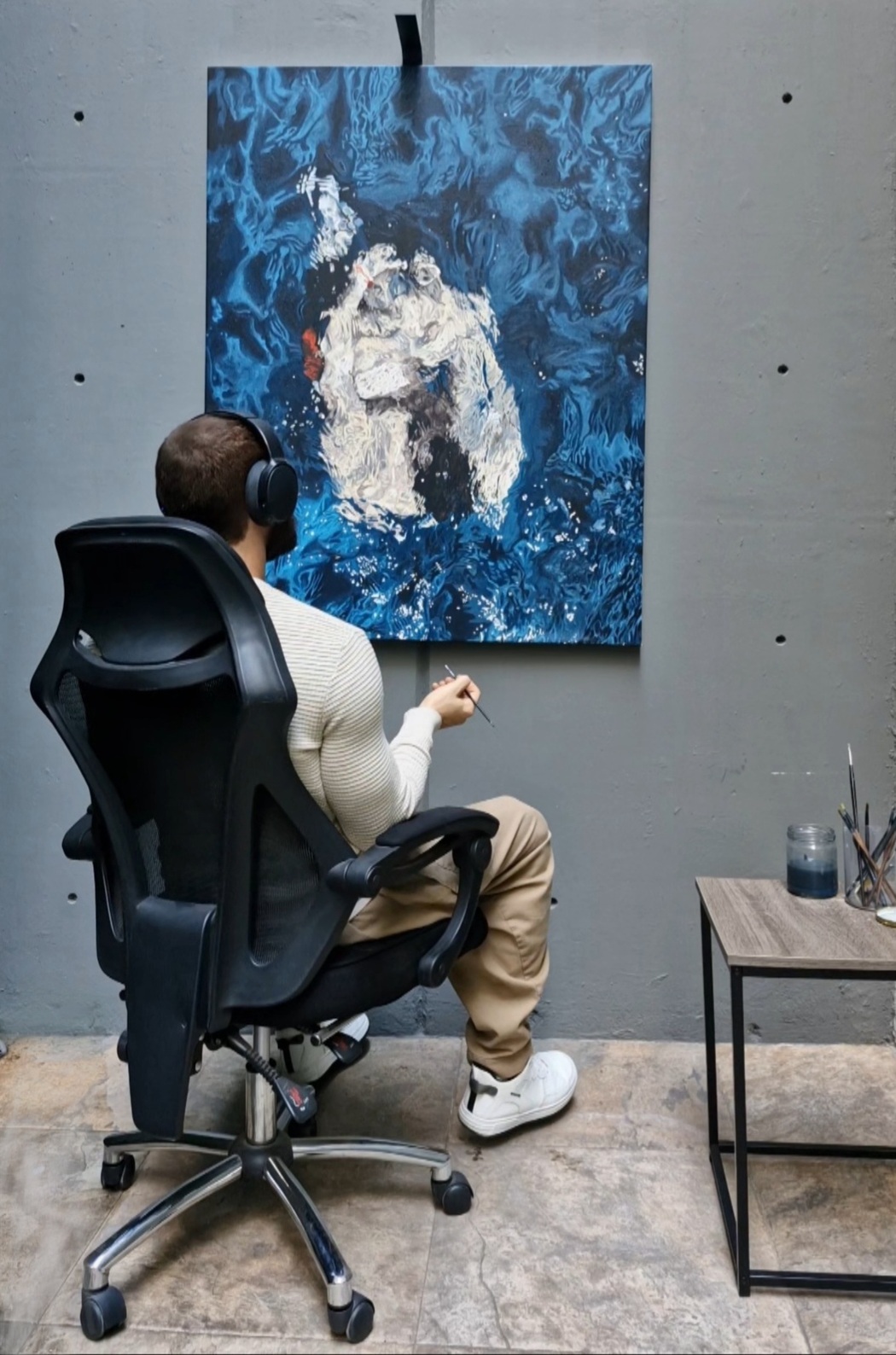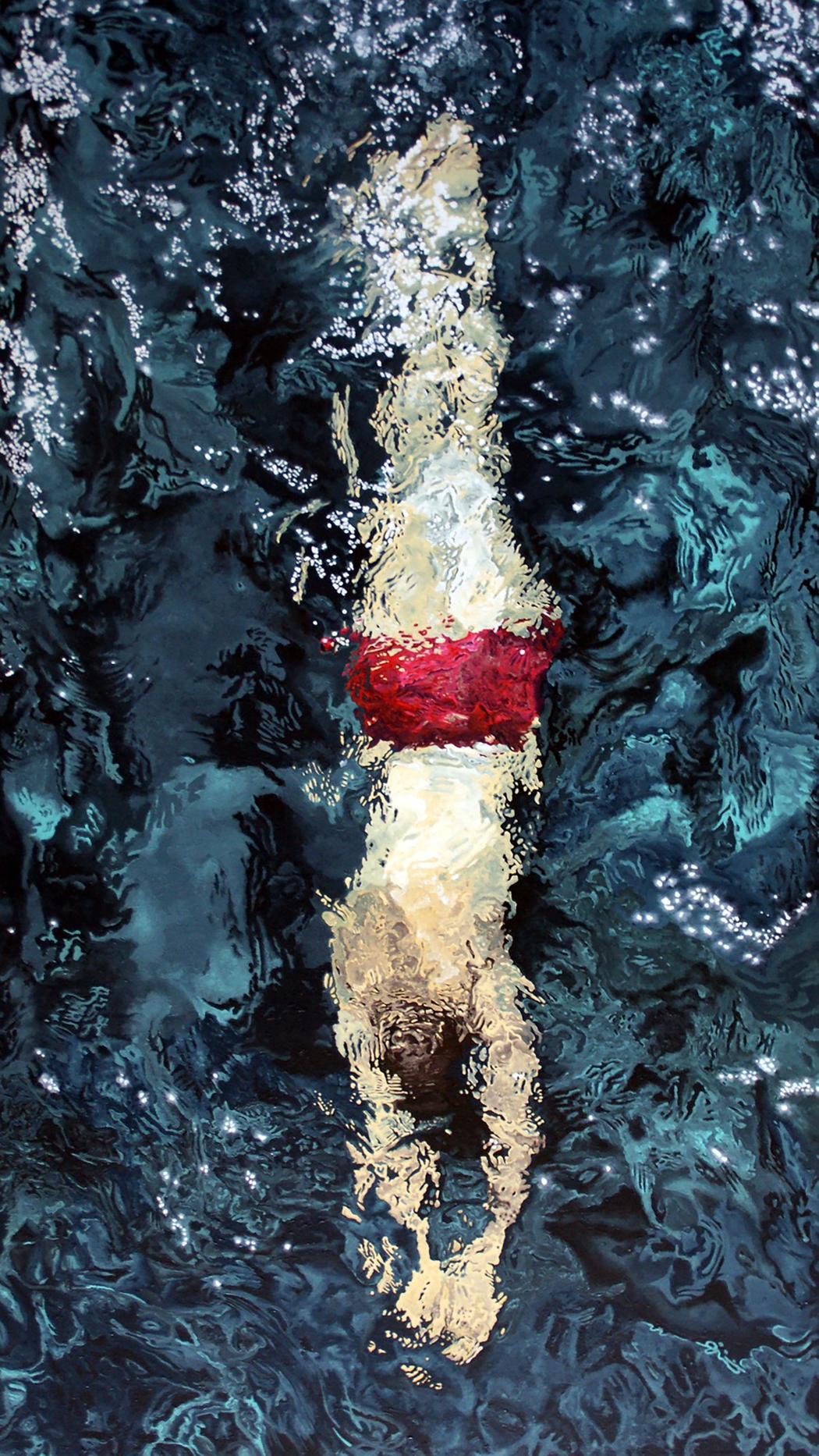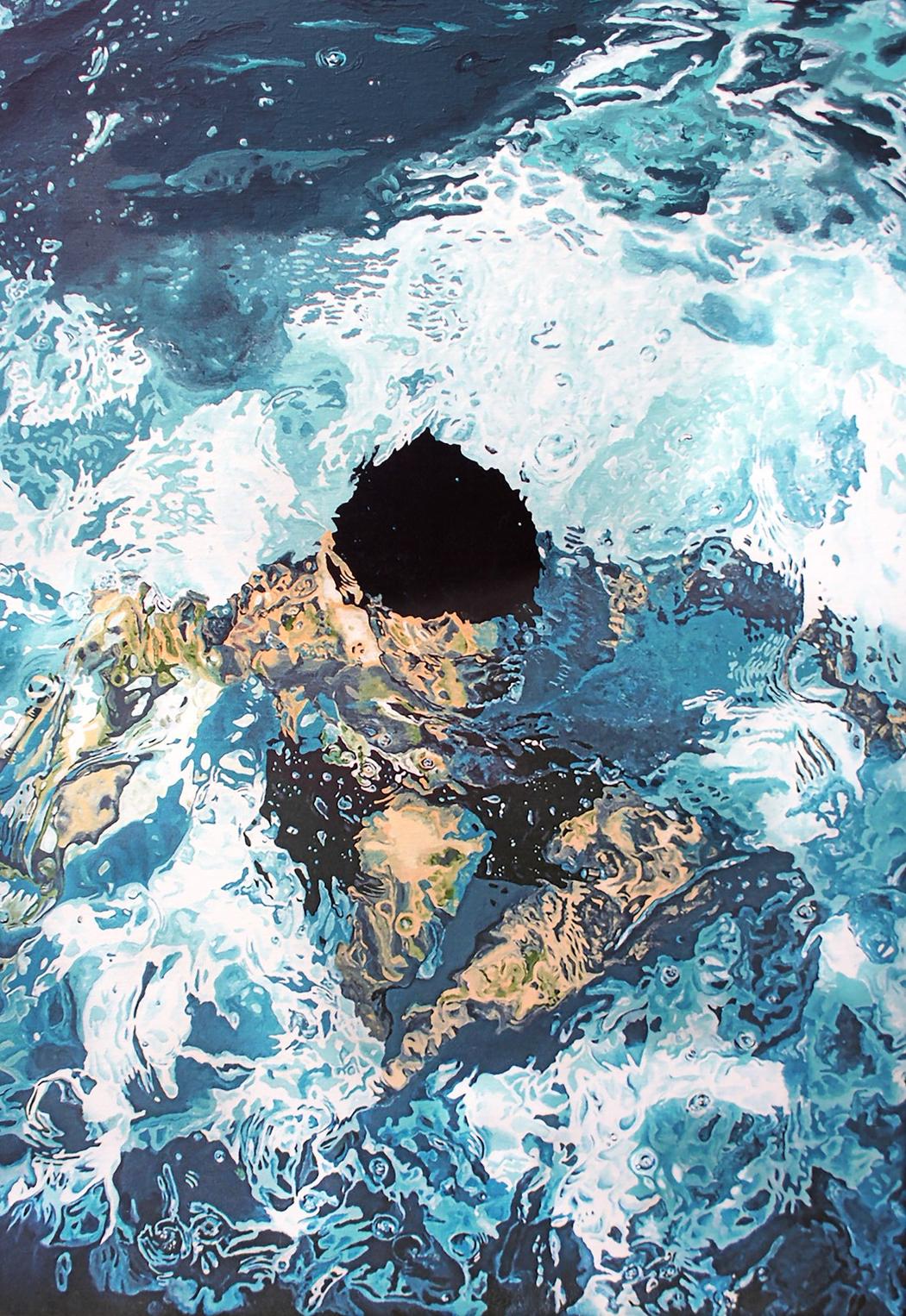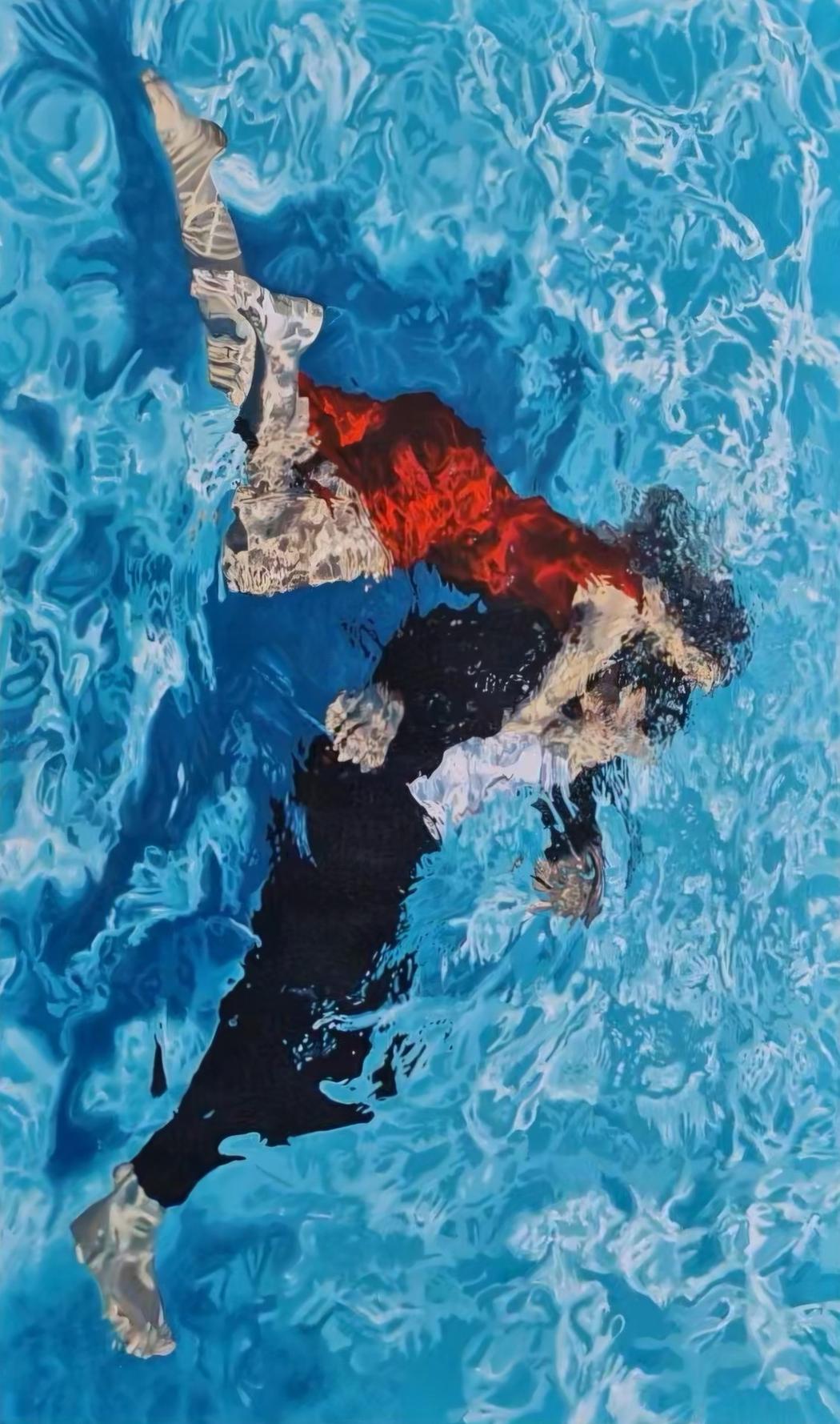Johan Cova

Can you tell us about the moment you decided to return to art in 2020? What inspired that shift?
The truth is, I never left art. It has been my therapy since childhood—a safe creative space I would retreat to whenever I felt I was merely operating in survival mode as a busy corporate man.
2020 was a unique opportunity — I believe for all of us — to reconnect with ourselves as the world suddenly shut down. For me, it was simply a matter of having more time. I was working less than part-time in the corporate world that I still belonged to, which gave me space to create. It was the first time in my adult life that I could hold a brush for more than two hours a day. I couldn’t stop creating. I found light in the darkness as the world was seemingly collapsing.
The transition happened organically, largely thanks to social media. I had only ever shared my work with family and friends, but when I started posting publicly, people began reaching out to ask if my work were for sale. I remember I was drawing The David of Michelangelo, posting daily progress, and receiving encouraging comments. I began selling. I was also painting horses for people I met through horseback riding, and they commissioned works with overwhelmingly positive feedback. That combination of events gave me the confidence to think: Well, maybe I am good at this because people genuinely like it.
How has living in Mexico City influenced your artistic vision compared to your time in Buenos Aires?
I’ve changed cities and countries many times, and each move has influenced my work through the diverse forms of creativity I’ve encountered. I’ve kept my eyes open to art in all its expressions.
Mexico City, in particular, has been one of the most culturally rich places I’ve lived, awakening my creativity in ways I’m still beginning to fully grasp. It’s the second city in the world with the most museums, and the first in Latin America—not to mention its countless galleries, cultural centers and architectural landmarks.
When I first visited Mexico City in 2017, I was overstimulated: Frida Kahlo, Diego Rivera, Rufino Tamayo, Jorge Marín, Leonora Carrington—the list of painters, architects, sculptors, musicians, and even culinary artists seemed endless. I felt, and still feel, like a child in a toy store—exploring, discovering, and enhancing my life experience thanks to this city’s overwhelming creativity and culture.
 Johan Cova | Sportif | 2022
Johan Cova | Sportif | 2022
Your Submergé series masterfully blends realism with abstraction. What draws you to depict the human figure submerged in water?
First of all, thank you for noticing and for the compliment implied. I’ve had collectors and viewers observe my work and say, “I love abstract,” while others say, “I love realism.” I always smile and respond, “Yes, me too,” allowing them to interpret it in their own way. I don’t correct them because both perspectives are valid.
I love the diversity of interpretations within Submergé; it enriches the collection and invites viewers into the open-ended nature of art. The fragmentation of the human figure creates a magnetic visual that draws you in—you need to pause to understand what’s happening and the environment around the subject. Then comes the emotional layer: stories of resilience, vulnerability, sadness, joy, among others.
I’ve always been drawn to the human figure and the complexity of human behavior and emotions. Even as a child, I was found quite often drawing eyes, hands, lips, and torsos. The human form has always been fascinating to me.
Water is a central theme in your work. What symbolic meanings does it hold for you personally?
Water has been present throughout my childhood, adolescence, and adulthood—it is my life. I’m the kind of person who will always choose the beach over the mountains. My mother is the reason for that. She kept me and my siblings close to the ocean, and I’m grateful to have grown up with easy access to it. The beach was pure joy, a place to bond, connect, recharge, and create lasting memories with friends and family. It still is.
As an adult, my connection with water deepened when I began exploring spiritual paths. Water, for me, is an element that facilitates a cleansing process—one that leads to clarity, certainty and inner peace. Even if you´re not a spiritual person you can feel a sense of ease after submerging in the ocean or a pool. I embrace water’s effect even in my morning showers, using that moment to meditate, checking in and expand the 70% of water within me—which we all have. I then begin my day with consciousness, purpose and intention.
 Johan Cova | Vacances | 2022
Johan Cova | Vacances | 2022
Do you work from photographs or live models when creating your underwater scenes?
The starting point is usually the idea—what I want to express—followed by underwater photoshoots with models that I conduct myself. Those photographs become the raw material for my paintings. However, I’m not rigid about this process.
For example, my recent piece Passionnés was inspired by a photo I didn’t intentionally capture. I was pursuing to photograph a dancing couple underwater, but one of the shots unexpectedly spoke to me. I thought, This is love—I want to talk about love. In that case, the creative process shifted: photo → idea → painting, rather than my usual sequence of idea → photo → painting.
Your technique mimics the way light and motion distort the body underwater. How do you approach this technically?
I intentionally seek the fragmentation of the human body during each photoshoot. The more broken into pieces the figure appears, the more I want to paint it. I enjoy the challenge, and I believe that complexity enhances the viewer’s experience.
I carefully control the conditions to achieve this effect. Each session yields around 500 photos, sometimes more. I shoot quickly to protect the safety of my breath-holding models. Noon provides the best light, the location must be sunny, and the water must be moved—but not by the model. I prioritize all these elements every time I shoot.
 Johan Cova | Passionnés | 2025
Johan Cova | Passionnés | 2025
What emotions or memories are you hoping to evoke in the viewer through the Submergé series?
I honestly don’t hold expectations in that regard. I’ve learned that whatever emotions inspired a piece may not mirror the feelings evoked in viewers.
One particular moment taught me this: a collector came to my studio to see Sportif, the third piece in the Submergé series, which talks about body image and societal expectations. With watery eyes, he said, “It reminds me of my brother. He was a swimmer and he passed away.” I was speechless and deeply moved. I never imagined my work could bring forth such a powerful memory of both sadness and love.
I’ve always believed that art—of any kind—should awaken emotions within us. When those emotions are stirred, the artwork, the movie, the song creates a connection with us. And that, to me, it´s the power of art at its finest.

Leave a Reply